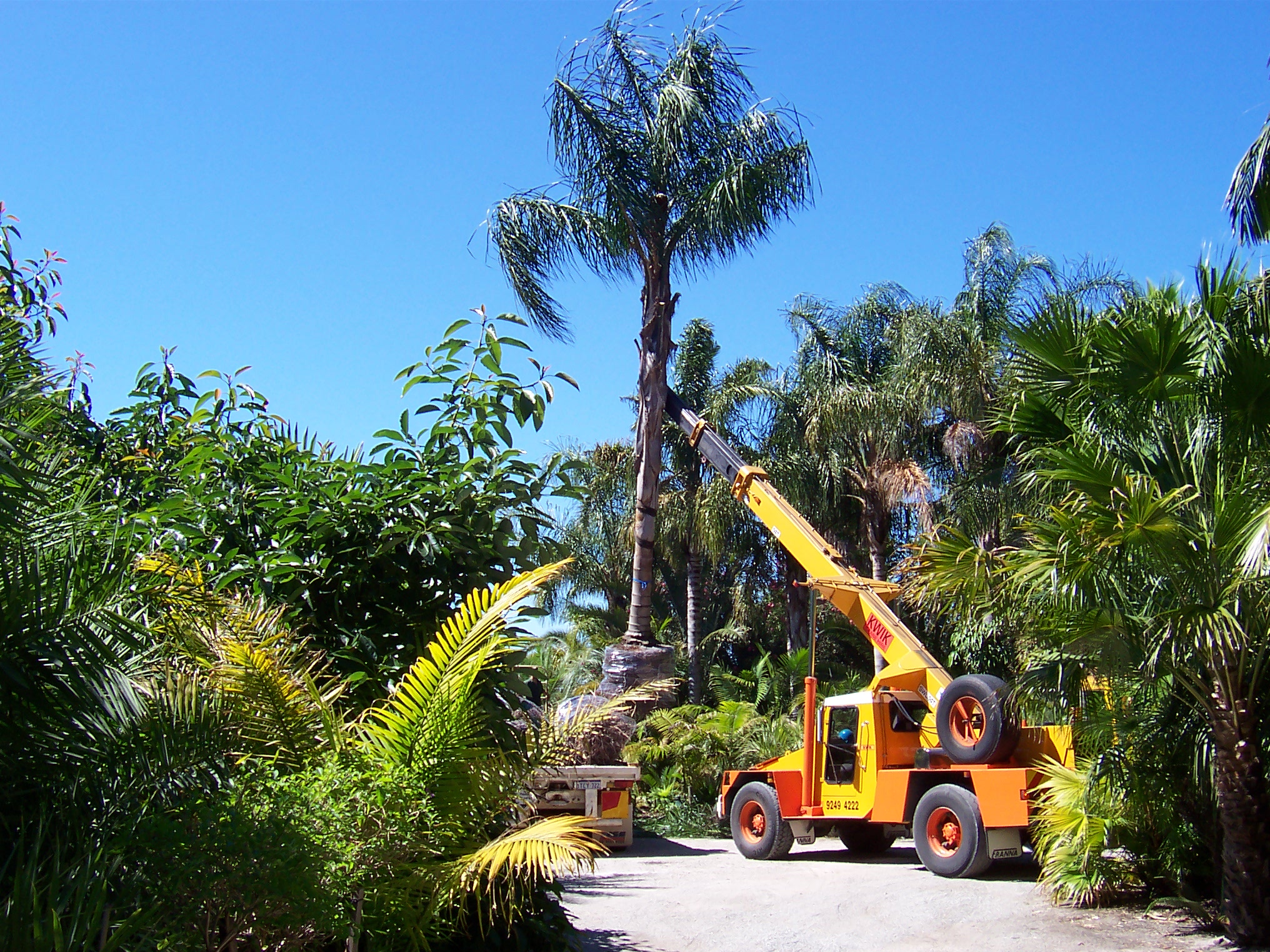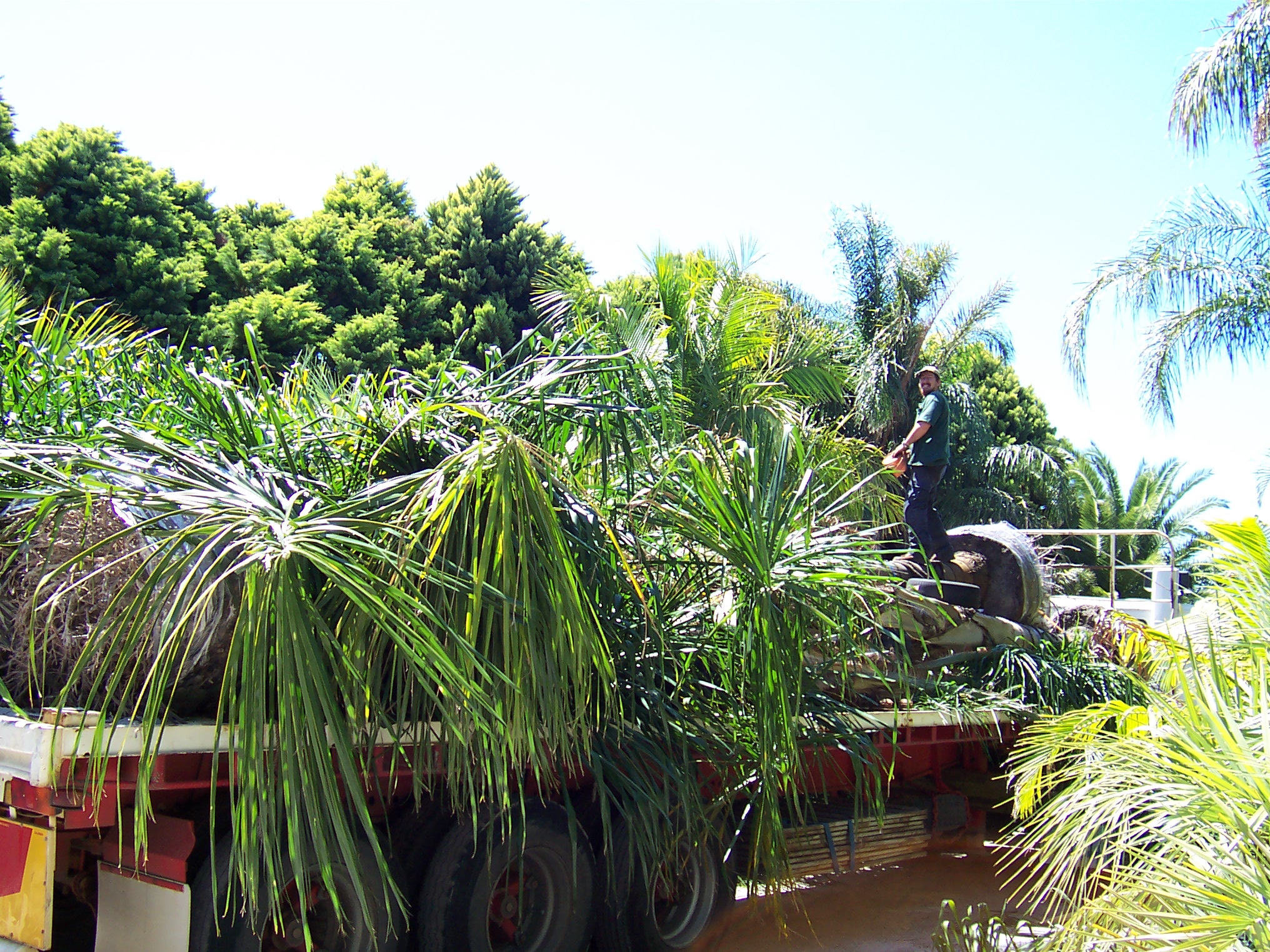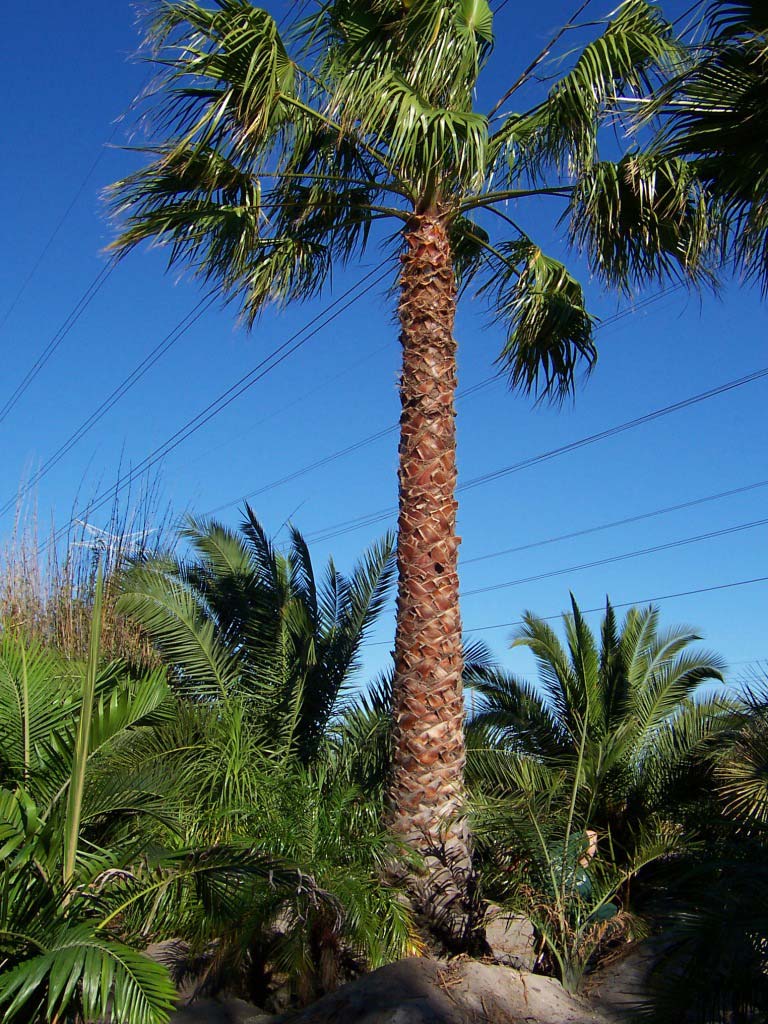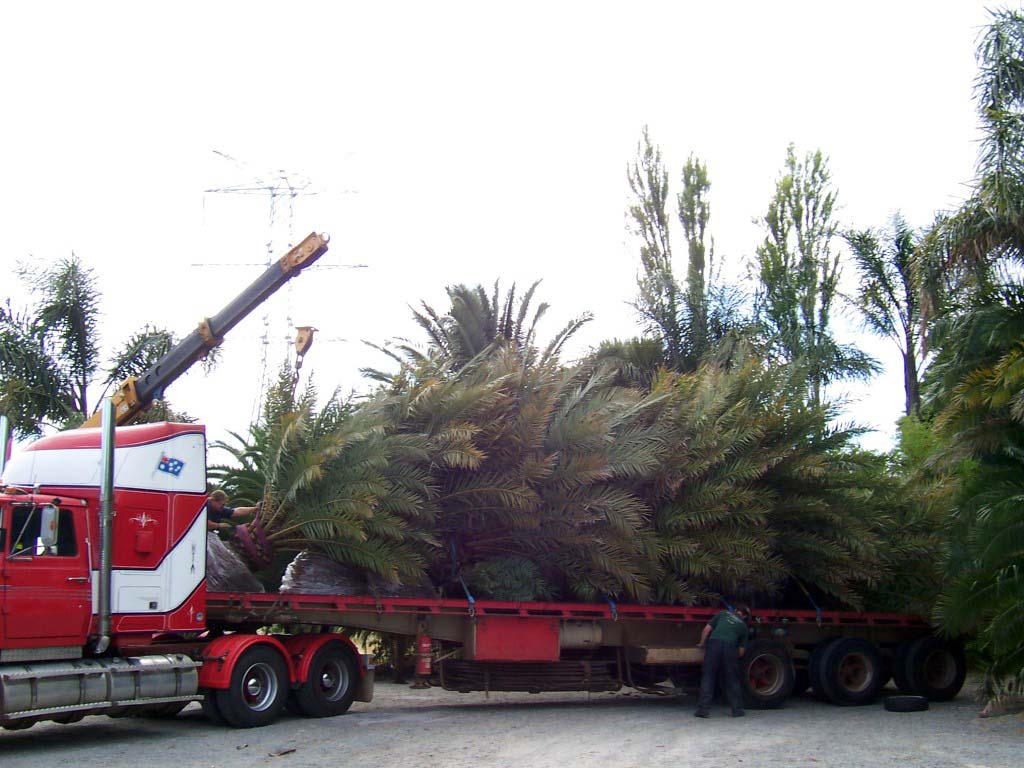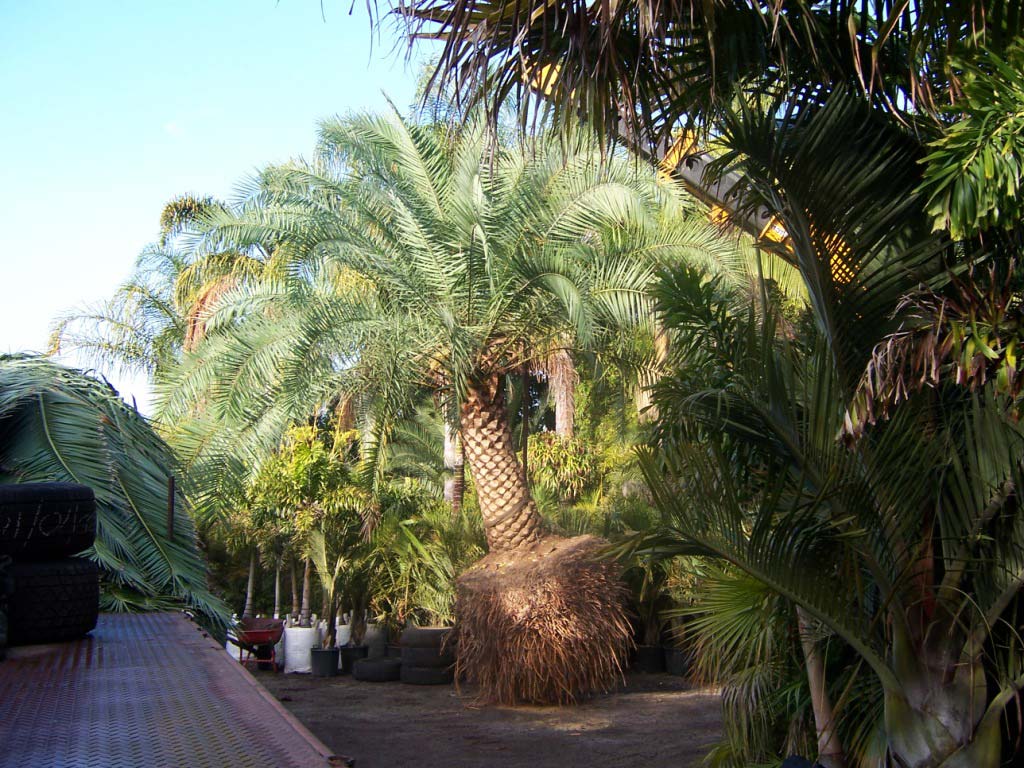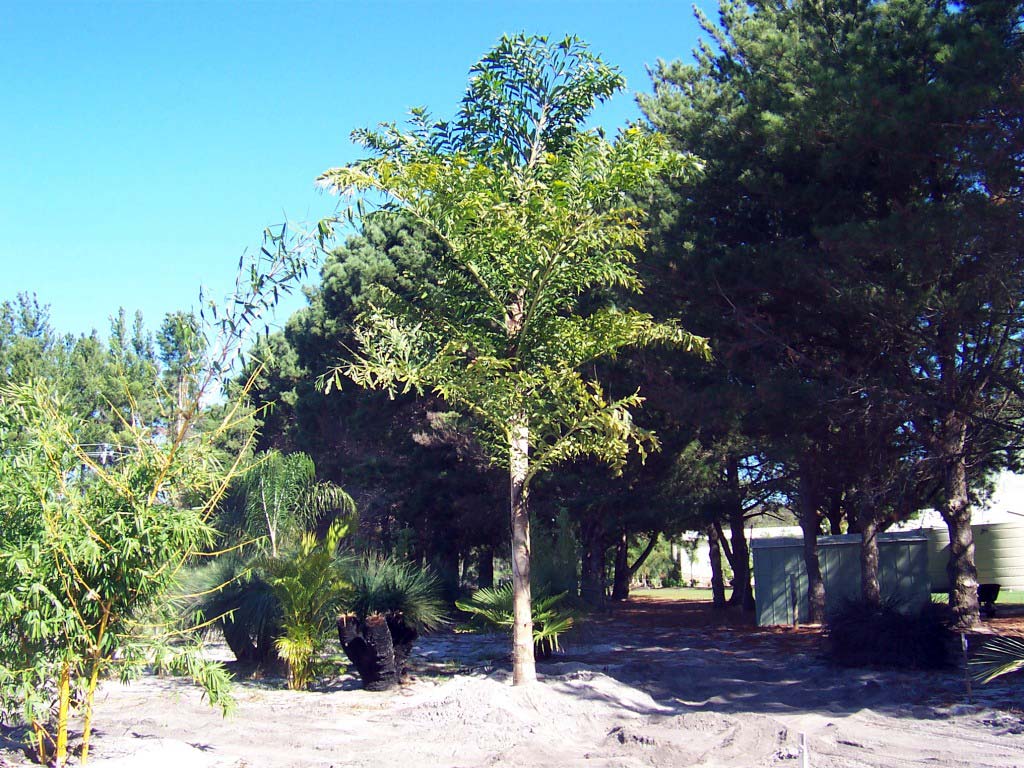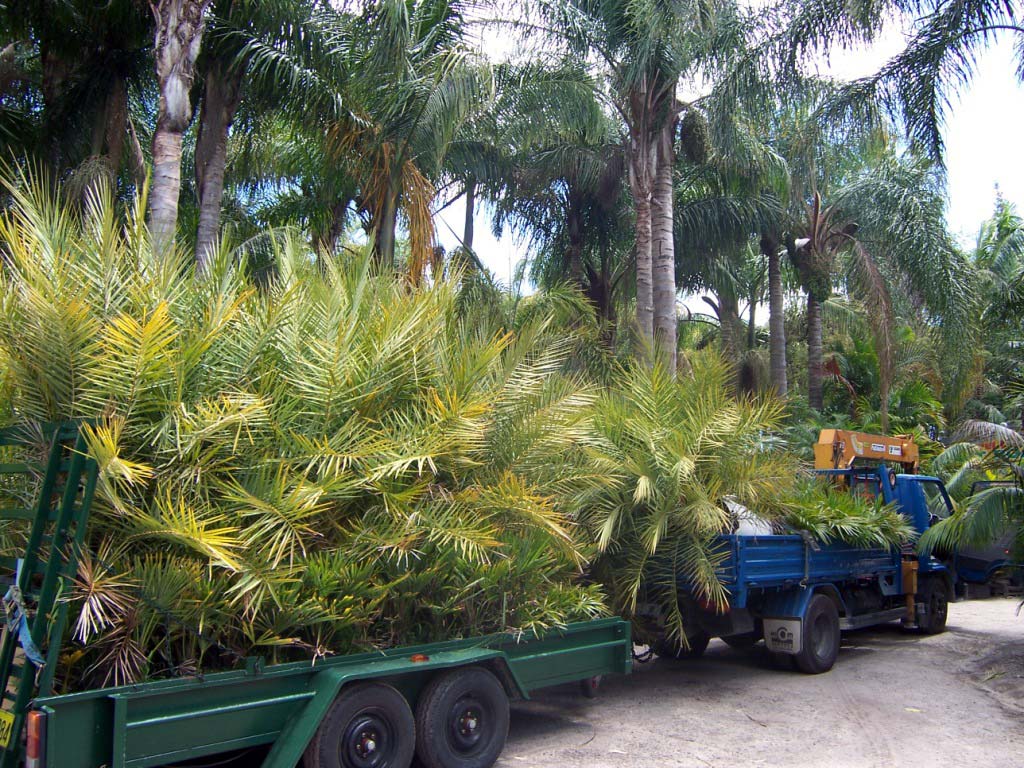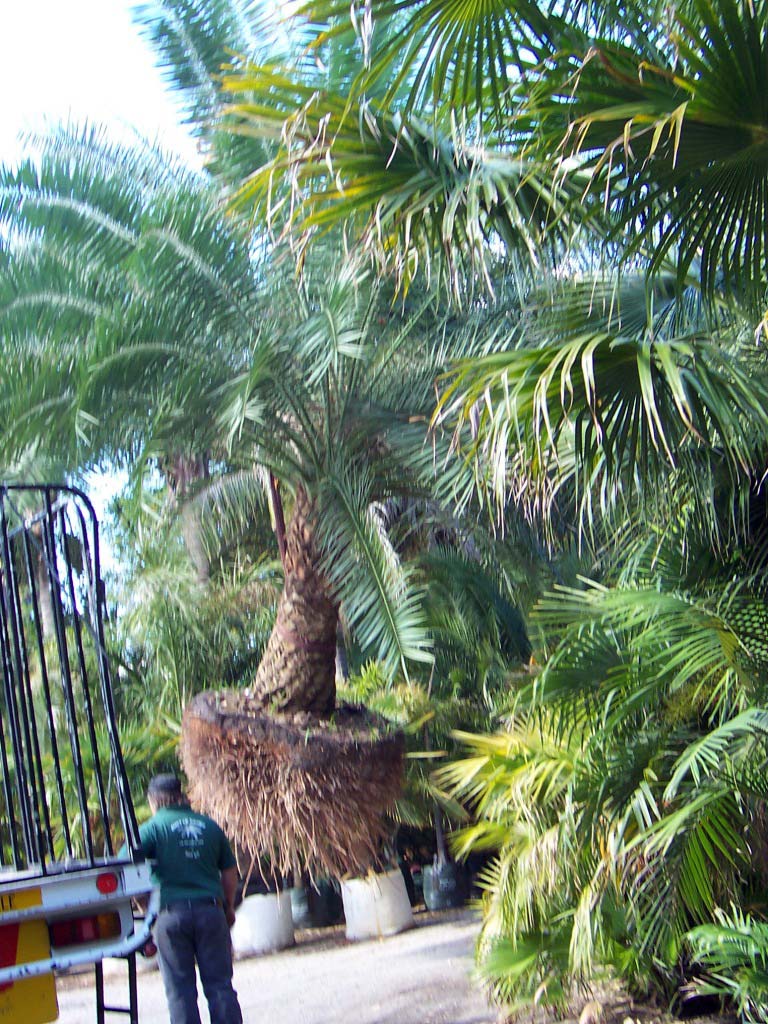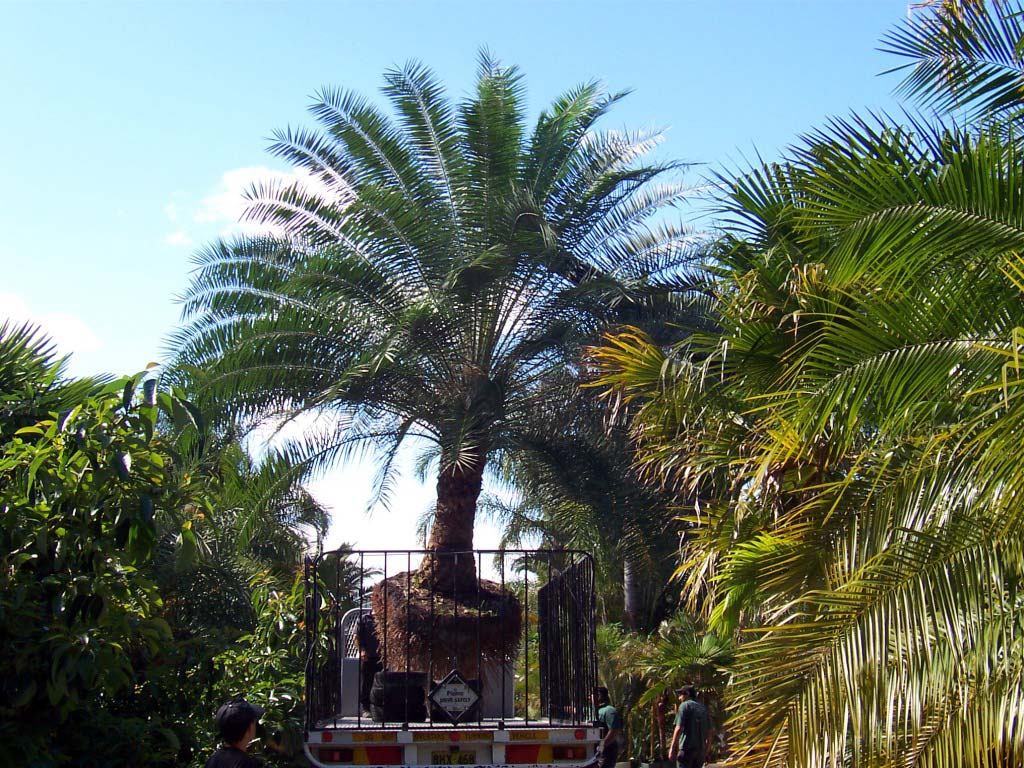Transplanting
Transplanting Palms
During the last 25 years Coast Road Palms has been involved in large Landscaping projects.
Some of our largest were a 5 acre property in Gingin WA, a Tropical Garden which we created in the Vines and landscaping for other large properties in the Swan Valley. At present we have scaled down our landscaping side but still do the odd ones upon request.
A large part of our business is providing advanced Palms, Cycads & Bamboo to the Landscaping Industry, here in Perth. We dig out advanced stock and pot into large bags of 100lt to 500lt, ready to be planted, thus avoiding any transplant shock which may sometimes happen when plants are dug out of the ground and then installed into gardens without new roots developing. Plants take a lot of after care when transplanted so the success will also depend on how well the plants are looked after once they are planted in their new home.
The 5 acre property we landscaped in Gingin, involved around 100 large Palms that were dug out of the ground and transplanted to Gingin and also another 400 plants that were in planter bags ranging from 45lt to 500lt bags. We are proud to say that we had a 100% transplant success rate.
We have many different variety of Palms that we have transplanted, some of these are the Phoenix family such as the Canary Island Palm, Sylvestris, Dactylifera, Reclinata and Roebelinii. We have transplanted many Cocos Palms, Cotton Palms, Bangalows, Alexandrea, Kentia, Majestic, Fishtail, Butia, Chinese windmills, Sabal, Ponytails and Golden Canes and many Cycads and Bamboos.
We have provided some of the pictures of our transplanting work that we hope you will find interesting.
Helpful Hints on Transplanting Palm Trees
Most palms have fibrous compact root systems and the size of the hole dug will depend on the size, age and variety of the palm and also the soil type. Soil type makes a difference because in clay or loam the soil will be quite compact and stick together, whereas, in sandy soil you may lose half of the soil as the palm lifts out of the ground.
General rule for a large established palm, for example a mature Canary Island date palm, would be the following :
Step 1: Cut the roots about 40cm away from the base of the palm and aprox. 80cm/100cm down.
Step 2: Cut a least one third of the branches as this will reduce stress on the plant.
Step 3: Always have the new hole ready, make sure it is wide and deep enough.
Step 4: Wrap up the root system whilst travelling on truck
Step 5: Once the palm is placed in the hole, it must be watered heavily with the hose and all air pockets must be removed. This will be done by watering and adding soil at the same time, You may use some Seasol at this stage, however no other manure or fertilizers should be used in the root system as it may damage the roots.
Step 6: Make a spool around the top of the soil so that it catches the water.
Step 7: Heavy deep watering must be maintained for at least the first 3 months. The palm may take up to a year to re-establish. You can fertilise at this stage.
Good Luck Planting!
© Coast Road Palms Perth Western Australia ( WA )
